Back in 2014, we celebrated the Thanksgiving holiday as so many outlets do, by talking about what we should be thankful for. Generally, doing so is little more than an opportunity to state the obvious or share trite sentiments that are more an exercise of convention and repetition than an expression of gratitude based on thoughtful reflection. But we did our best not to mail it in and, in the process, shined a light on a few things we thought all anglers should take the time to acknowledge.
This time around—a few years later and with the world feeling like a very different place—we decided to ask a handful of new voices what they thought anglers should be thankful for in 2017.
A New Ethic
Ted Williams, angler and author — Massachusetts
We are privileged to be witness and part of the burgeoning growth of a new ethic that enables management and appreciation of all native fish in native habitat from sea lampreys to alligator gars to Gila topminnows to Gila trout to humpback chubs.
This last species provides maybe the best case study. As a child I was taught by elders, including relatives, outdoor writers and fish managers, that there were “desirable fish” like alien trout from Europe and the Pacific Northwest and “undesirable fish” like native chubs. These you squeezed and tossed into the bushes.
In 1962 the Bureau of Reclamation closed the gates on the Flaming Gorge Dam thereby impounding the upper Green River in Colorado, Utah and Wyoming. Then state and federal fish managers set about poisoning the humpback chubs and other “undesirable” natives from 445 miles of the Green and its tributaries to make way for alien brown and rainbow trout.
Today the humpback chub is listed as federally endangered. And in its last stronghold, the Colorado River system, the National Park Service, the U.S. Geological Survey, the Bureau of Reclamation, the U.S. Fish and Wildlife Service and the Arizona Game and Fish Department have been killing the alien trout in the two main trout-producing tributaries via electro-shocking and a metal weir that interdicts spawning. The trout fishing in the 16-mile “Lees Ferry” stretch below Glen Canyon dam remains superb because the water there is too cold for humpbacks.
While a few ecologically challenged anglers bitch about trout control, the only major opposition issues from Zuni Indians who consider all fish, even aliens, sacred. The park placates them, at least partially, by giving them the euthanized trout.
Snowpack
Hal Herring, angler and author — Montana
I grew up in north Alabama, in a limestone country where drought and flood ruled much of our lives. I remember a night in December when it rained a Biblical 15 inches in less than 24 hours, and I remember an early September when it had not rained in 50 days, and our little creek was reduced to a series of scattered potholes, swarming with gasping bream and bass and bullheads, chubs, shiners. Although it rains an average of 55 inches per year, making the woods and fields lush and verdant, the supply of water is a feast or famine kind of deal.
In early June of 1989, my wife and I came West in search of elk, trout, mountains, freedom. We stopped to let our dog run along the Clark’s Fork of the Yellowstone off the Belfry Highway in Wyoming, and I was … what? Smitten? Flabbergasted? Gobsmacked? Permanently altered at the mitochondrial level?
Here was a country of prickly pear and stone, bunchgrass and sage, dry as a dream of the Gobi, hot as Coahuila. And through this vast aridity poured this freezing, clear-as-ether envelope of the purest water, making a hissing sound as it surged in near-flood through the different kinds of willows, some red as blood, others yellow as sulfur. The river seemed an impossible thing, and the trout—coldwater denizens, out here, in this blazing desert—that I could see rising in the slicks and eddies seemed just to add another layer of impossibility to the whole experience. I had no names for these places then, no knowledge of where it all came from, how it could be.
The Clark’s Fork of the Yellowstone is born of the snowpack of the mighty Beartooth Range in southern Montana. Granite Peak is there, almost 13,000 feet of gray ragged stone, veins of black ice, alpine basins that catch and hold the howling blizzards. The Beartooth Plateau, with its hundreds of glacial lakes, its snows piling up ten and fifteen feet deep, holding on in gently melting drifts and great landscape-carving torrents all summer long. I would learn all of this, in time, the truth of snowpack in the high country making life possible down below. And I would make a whole new life in the West because of it. We ski it, swim in it, fish in it, drink it, raise a son and daughter on it, because once-struck with such a power of wonder, I could never leave it or the place it creates. It is all based on snowpack, the blizzards and soft spring snows, the equinox and solstice storms, all collected in the staggering heights, and all melted, with relative slowness, in the growing power of the summer’s sun so the water comes down, down, down into lands that almost never see rain. The snowpack makes it all work. I have never seen a system of such perfection. The human brain has never conceived of anything approaching it, and it never will, but thankfully, we have in that same brain the capacity to be struck humble and grateful whenever we stop to contemplate it.
Those that Fight
Todd Tanner, angler and author — Montana
Thankful? In 2017?
Well, with the politicians in Washington, D.C. doing their level best to trash our landscapes, lock in climate change and turn America into a resource-exporting Third World country, I’m afraid it’s a shorter-than-usual list this time around. That said, I am truly grateful that the fly fishing industry is working overtime to protect the places we fish. Outstanding companies like Orvis, Patagonia, and Scientific Anglers are fighting day-in and day-out to hold on to our public lands, stop the Pebble Mine, and preserve a livable climate. The American Fly Fishing Trade Association (AFFTA) is also pulling its weight on conservation.
While it’s true that our current administration has made it clear that they support an anti-fishing, anti-hunting, anti-public lands, anti-environment and anti-stable climate agenda—hell, we might as well describe Washington, D.C. as “Rape & Pillage, Inc.”—at least the top brands in the fly fishing world understand the importance of healthy landscapes, clean waters and a livable climate. I’ve personally watched companies like Patagonia, Orvis, Scientific Anglers, Costa, Fishpond, Sage, Redington, RIO, Abel, Winston, Yeti, Simms, TroutHunter, Sweetwater and RepYourWater wade into the fight for our future. Kudos to the fly fishing industry leaders who have our backs in 2017. They definitely deserve our thanks.
Culture
Mike Sepelak, angler and author — North Carolina
The best fishing stories are seldom about the fishing itself and, in that vein, this Thanksgiving I find myself thankful not for the sport but for the culture that surrounds it. Fly fishing has inspired a deep pool of fine writers throughout the years and continues to do so on a wide variety of platforms. From Izaak Walton to Thomas McGuane, our sport has delivered a deep pool of literary marvels. I’m thankful for Leeson, Babb, and Maclean. For Voelker, Lyons, Gierach. My library’s full of them.
Today’s periodicals look beyond the how-to and where-to and into the why-to and the what-I-shouldn’t-do-but did. The Flyfish Journal. The Drake. Gray’s and TROUT. They are bringing forward new and interesting voices with every edition. A myriad of online sources, this magazine among them, are doing the same thing—many inspired by that period of time when blogs flourished and many of us were inspired to speak, to find our own voices. Mysteries Internal. The Fishing Poet. Stalking the Seam.
We are privileged to witness the incredible photography being published these days, which so vividly depicts what we do and why we love it, thanks to the shooters whose wonderful eyes and unique perspectives show us our sport in ways that are simultaneously amazing and warmly familiar. Brown, Gregson, McGlothlin, Romano, Cahill. I’m thankful for the emerging art of the video. Of the blend of story and visuals that are capturing our imaginations. Patagonia, YETI, Costa, Felt Soul Media, and a hundred small outfits creating visual delights and strong messages.
And art. Culture is often measured by its art and our sport is blessed. White, DeYoung, Keeler, Puckett, Marquardt, and Schlaff. The variety of talent and media is astonishing.
For all of this, we have to thank the culture that inspires it. A culture that reaches deep inside us and draws out the very best from its creative ranks. In truth, it’s a culture of cultures. Subcultures based on place and prey, age and opportunity. From tartan plaid, old school, dry fly trout fishing to chuck-and-duck musky madness. From warm saltwater stalking the flats to swing-and-step, ice-in-your-guides steelhead frustration. From taimen half-way around the planet to largemouth in the farm pond down the road. It’s all fair and proper game and each world has its stories to be told.
I’m thankful that we’re telling them all, and telling them well.






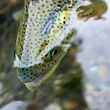
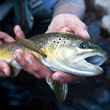




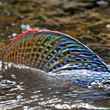



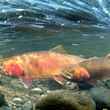
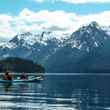



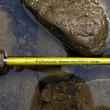
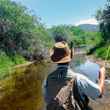



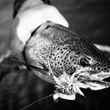
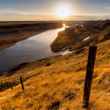



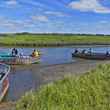
Comments
Brian Koz replied on Permalink
Thankful for these and a myriad of others out there putting forth many more hours than will ever be recognized to help fight the good fight. Tight Lines!! Koz
Pages